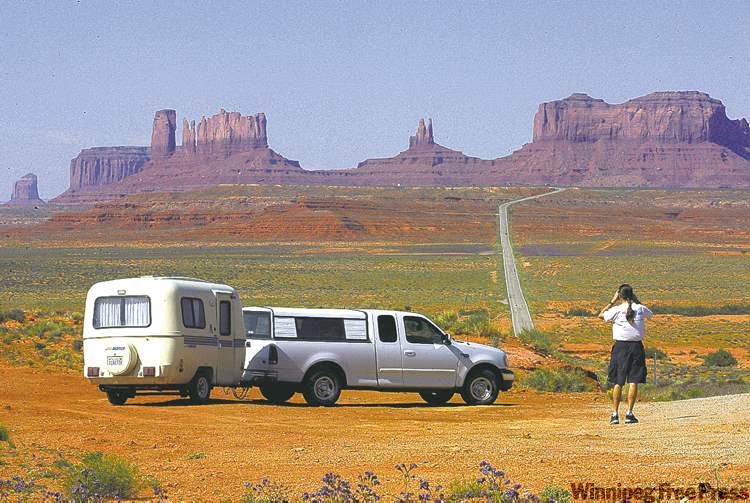AUTO TECH: Wheel-bearing maintenance vital in trailers
Advertisement
Read this article for free:
or
Already have an account? Log in here »
To continue reading, please subscribe:
Monthly Digital Subscription
$0 for the first 4 weeks*
- Enjoy unlimited reading on winnipegfreepress.com
- Read the E-Edition, our digital replica newspaper
- Access News Break, our award-winning app
- Play interactive puzzles
*No charge for 4 weeks then price increases to the regular rate of $19.95 plus GST every four weeks. Offer available to new and qualified returning subscribers only. Cancel any time.
Monthly Digital Subscription
$4.99/week*
- Enjoy unlimited reading on winnipegfreepress.com
- Read the E-Edition, our digital replica newspaper
- Access News Break, our award-winning app
- Play interactive puzzles
*Billed as $19.95 plus GST every four weeks. Cancel any time.
To continue reading, please subscribe:
Add Free Press access to your Brandon Sun subscription for only an additional
$1 for the first 4 weeks*
*Your next subscription payment will increase by $1.00 and you will be charged $16.99 plus GST for four weeks. After four weeks, your payment will increase to $23.99 plus GST every four weeks.
Read unlimited articles for free today:
or
Already have an account? Log in here »
Hey there, time traveller!
This article was published 10/06/2011 (5325 days ago), so information in it may no longer be current.
With summer soon here, there will be many drivers towing trailers again.
It may be a small utility trailer to get landscaping supplies, a boat trailer for some fun at the lake, or a travel trailer for some adventure across the country. Unfortunately, I’ve seen many trailers stranded on the side of the road because of failed wheel bearings. Some maintenance now can save a lot of grief later.
Bearings are precision-manufactured devices and when installed properly they can easily have a lifespan of over 480,000,000 kilometres. When a bearing does fail, it is usually because of either impact damage or rusting of the bearing components.

Impact damage can occur a few ways. When a trailer or vehicle is shipped, if it is tied down too tight, this places a high load on the bearings. The rhythmic vibrations set up by the transport vehicle causes wear on the bearings called brinelling. Visually, these bearings have slight wear bars across the face of the bearing races from the impact. When you tow the trailer, the bearing surfaces gradually start to fail.
Sliding a tire into a curb or hitting a deep pothole at speed, especially with the brakes locked, can damage a bearing. The best way to find impact damage is to remove the wheel hub, clean the bearings of all lubricant and rotate the parts together by hand. If you can feel any roughness, then look for damage. If you can feel roughness, the bearing should be replaced.
Rust can destroy bearings quickly. Older, high-mileage vehicles may have worn wheel bearing seals that will allow moisture into the bearings, but boat trailers are particularly prone to rust damage. Avoid backing axles into water, and if you have to, such as with a boat trailer, repack the bearings often to help remove water that may have entered.
To repack trailer wheel bearings, remove the wheel assembly, then pop off the dust cap on the centre of the hub. Special dust-cap pliers are available but with a little care, a chisel and hammer will remove the cap without damage.
Under the dust cap there is a cotter key that needs to be straightened and removed. Always replace the cotter key with a new one. Next, the centre nut can be removed, followed by a washer. Now the hub can slide off the spindle and the outer wheel bearing cone assembly removed. On the inside of the hub, the wheel seal can be removed with a pry bar — replace with a new seal — and the inner wheel bearing cone assembly will lift out.
Wash the inside of the hub and the bearing cone assemblies with solvent to remove all grease and contaminants. Visually inspect the bearings for a smooth slightly frosty appearance on their contact surfaces. If they have blue spots, score lines, indentations, rust, or small specks on the wear surfaces, the bearings should be replaced. The bearings are two-part assemblies. The cone assemblies are already out. Remove the cup half off the bearings from the hub with a punch and hammer, using alternating hits that will drive them out straight from the hub.
New bearing cups are installed by driving them back in with a driver — a metal spacer the size of the bearing cup that allows you to hit it straight. Never hit directly on the bearing cup. Coat the inside of each cup with wheel-bearing grease and then pack the bearing cones with about a tooney-sized ball of grease, ensuring the grease gets between all the bearing rollers.
Install the bearings and new seals and place the hub back on the spindle. Tighten the spindle nut to about 12 ft.-lbs. of torque while rotating the hub. Then back the nut off a half-turn and tighten by hand only. This takes up the clearance without loading the bearings so grease can lubricate the parts. Install a new cotter key, coat the dust cap with grease on its edge to help it seal and tap it in place. Torque the wheel back in place and it is ready for the road. Don’t forget to check tire pressures, too, before you leave.
Trailers are easy to overload, so wheel bearings should be checked at least once a year — more often for boat trailers. Preventative maintenance can make that summer trip a lot more fun.
Jim Kerr is an experienced mechanic, instructor and member of the Automobile Journalists Association of Canada.
kerr.jim@sasktel.net

